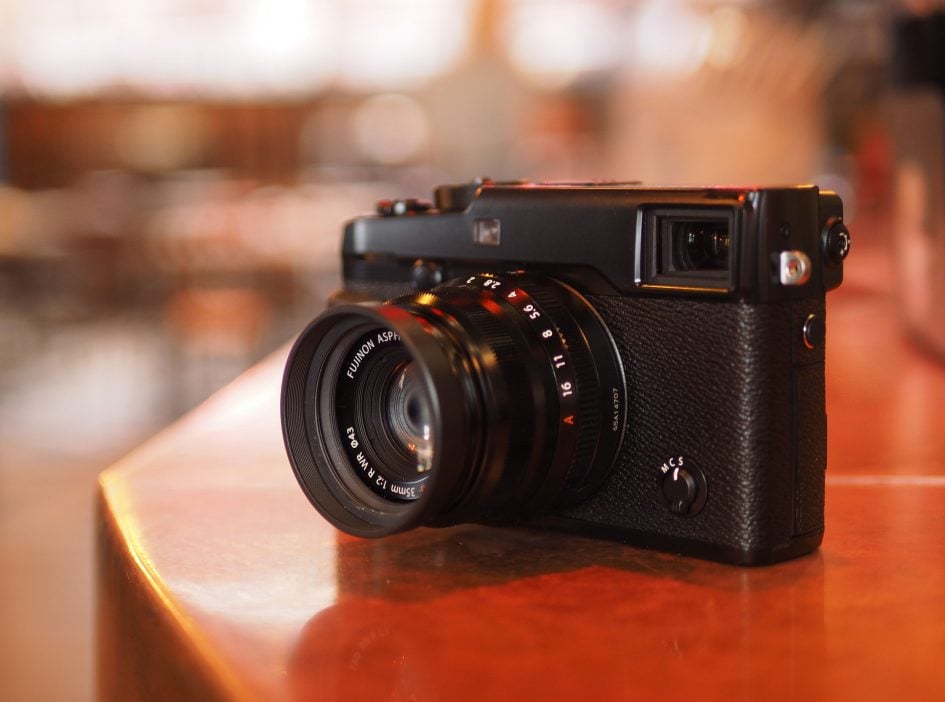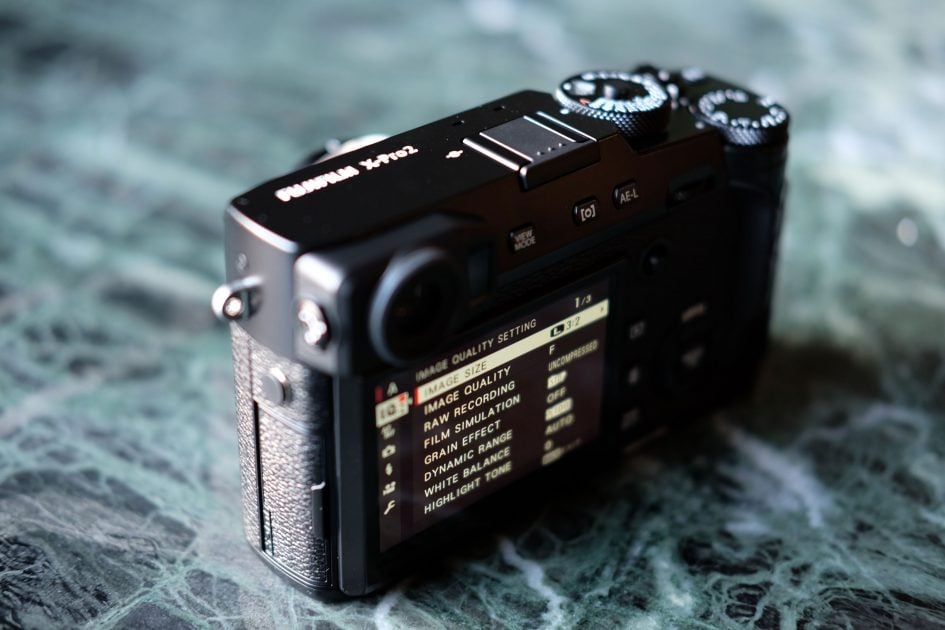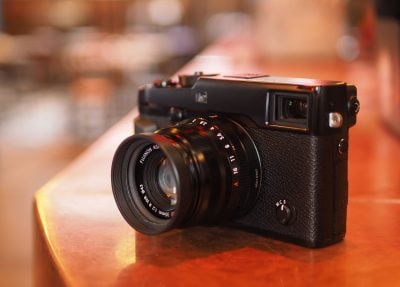Fujifilm X-Pro2 review
-
-
Written by Gordon Laing
Verdict
Fujifilm’s X-Pro2 takes the beloved rangefinder-style body that launched the X-mount and makes a raft of significant upgrades. Some may have been gradually deployed on more recent models or with firmware updates, but there’s also a lot that’s genuinely new here, and it all adds up to a comfortably more powerful and confident camera that deserves its position as the flagship in the X-series. Even owners of models like the XT1 will like a lot here, although I sincerely hope the new sensor, twin memory card slots and AF joystick will make it into a future XT2.
Starting with the sensor, Fujifilm’s managed to increase the resolution from 16 to 24 Megapixels without compromising noise levels or the quality we’ve come to love from older X-Trans II models, even on long exposures. In terms of linear resolution there’s not a huge difference between 16 and 24 Megapixels, so I wouldn’t upgrade based on this alone, but the new sensor now also features a significantly broader and denser array of phase-detect AF points that do make a noticeable difference. Fit one of Fuji’s LM lenses and you’ll notice the X-Pro2 focuses faster and more confidently, while also being able to track moving subjects across a much broader area than before. It’s not just an improvement over the most recent X-Trans II models running their latest firmwares, but a World-apart from the original X-Pro1. In four years Fujifilm has gone from a camera which caused me to curse out loud when it came to focusing to one which I successfully used to shoot not just active kids but even motorsports with a 100-400mm telephoto zoom. That’s progress.
The weatherproof construction and dual memory card slots make the X-Pro2 feel and handle more like a pro body and while the EV dial can find itself turned when pulled out of a bag, I found the other new controls a success. The addition of a front dial is useful and both it and the rear dial now feel more tactile while also offering a push-click option. Best of all, the dedicated AF joystick makes selecting a single AF area so much easier than multiple button clicks – admittedly not as fast as a touchscreen, but still a massive improvement over earlier models. I’d also like to give a respectful nod to the newly designed shutter mechanism, not just because it now finally offers a 1/8000 mechanical shutter, but also because of its very satisfying sound. Forget the emotionless ‘click’ of earlier bodies and say hello to a lovely ‘ker-chick’ which caused me to smile every time I took a photo.
Of the more minor but still useful updates, I appreciated having the option to record RAW files with either lossless compression or none at all, and was delighted to find RAW files could now be recorded at 100 ISO. This is big news for long exposure photographers who often like to shoot at the lowest possible ISO (even if it means a compromise in dynamic range), but who would still like the flexibility of a RAW file for post-processing in or out of camera. And speaking of long exposures I’m pleased to report I fired-off exposures as long as eight minutes in daylight with the port door open and long exposure noise reduction disabled to no ill-effect. While navigating the options you’ll also appreciate Fujifilm’s redesigned menus which are more sensibly arranged and more attractive too.
Like Fujifilm’s other recent bodies, the X-Pro2 also gains an electronic shutter option for genuinely silent shooting at speeds up to 1/32000 and built-in Wifi for wireless image transfer, remote control and GPS tagging with iOS and Android smartphones. These may now be fairly standard features, but again are upgrades to the original X-Pro1 and make it more attractive to discreet street shooting.
Despite the raft of upgrades though, the X-Pro2 delivers the same core-concept as the original X-Pro1: it is at its heart, a retro-styled digital rangefinder, which in turn makes it pretty unique in the market. Even more so when you consider the hybrid viewfinder which, as before, offers the choice of an optical rangefinder-style view with a variety of overlays or a fully electronic view. Like the X100T compact, the optical view is also now available with a small window to the EVF panel in the lower right corner, used to deliver magnified focusing assistance or a preview of the complete image to judge white balance, film simulation or other effects. This is seriously clever stuff, especially how the frame indicating the coverage of a lens is not only overlayed in the optical view, but adjusted in size and position to compensate for parallax at closer focusing distances.
Sure there’s limitations: focus really close and the AF area may not be accurately positioned in the optical view and the EVF window is only available in single area AF modes when it could still offer the useful full image preview in other area modes. I should also mention the coverage frame understandably gets smaller as the focal length increases, and once you get to short telephotos, let alone long ones, it’s become very small indeed – as such the optical view is best-used for effective focal lengths between 28 and 50mm, but that’s what most street shooters use anyway and once you fit longer lenses or need 100% accurate coverage, you just switch to the fully electronic view.
So far so good and I’ve not even mentioned that the video quality – previously an Achilles’ Heel for Fujifilm – is now greatly improved. Sure it’s still not as good, or perhaps more fairly, not as flexible in processing and control as the best out there and still only available in 1080p resolutions, but it remains remarkably good considering what came before.
Strangely AE bracketing is still a paltry three frames, but for me the biggest issue with the camera is the screen. Fujifilm may have increased the resolution and revamped the user interface, but like the X-Pro1, it remains fixed in place, and like all X-mount cameras to date, it’s not touch-sensitive either. Now I know some photographers will say a big ‘so what’ to this complaint, but for me it seriously impacted my own use of the X-Pro2. I regularly shoot at high or low angles and have come to rely on an articulated screen. As someone who mostly shoots in the tall / portrait orientation, I get frustrated by screens which only tilt vertically, but to have one which doesn’t move at all drove me to distraction on a number of occasions.
As for a touch-screen, they simply make repositioning an AF area quicker and easier. There’s no arguing with it. Yes, the new joystick makes the repositioning of the AF area quicker and easier than before, but if you’re going from one side of the array to the other, you’re still talking about several seconds worth of clicks and a potentially lost moment versus a single simple tap. Why wouldn’t you want that? Fujifilm say they surveyed photographers about this. I say they should expand the survey group. The touch-screen on the X70 shows how useful it can be and I wish Fuji’s engineers and management could see how it’s equally appropriate on a high-end camera. C’mon, even Nikon and Canon now equip their pro DSLRs with touchscreens.
But equally I understand I’m not personally the target audience for the X-Pro2. It’s aimed at photographers who’ll almost exclusively compose with the viewfinder and as importantly exploit the hybrid capability. After all, you’re paying a premium for this technology, so if you don’t think you’ll use it, I’d suggest a different model in the range, or waiting for the X-Pro2’s other enhancements to filter down to future bodies.
Fujifilm X-Pro2 final verdict
Fujifilm’s X-Pro2, like its predecessor, occupies a unique position in the market. It’s one of the few interchangeable-lens digital rangefinders available with the major competition coming from the Leica M. The Leica has a larger full-frame sensor and native access to a series of legendary lenses, but the Fuji has a hybrid viewfinder, far superior AF especially for continuous tracking, faster burst shooting, longer exposure capability, built-in Wifi and, oh, comes in at about one third of the price. And while the sensor is ‘only’ APSC in size, I have absolutely no complaints with the image quality, nor indeed with Fuji’s growing range of excellent X-mount lenses. Indeed I can’t think of a model that delivers better quality out-of-camera and I reckon you’d be mad to buy a Leica M over an X-Pro2 if you want a digital rangefinder-style camera.
The bigger question is whether you truly want a rangefinder-style camera. They’re not for me personally and while I marveled at the hybrid viewfinder technology, I spent as much time cursing the non-articulated screen. But again I realized this going into the review: the X-Pro is not for me. The XT series is much better-aligned with the way I shoot but I’m professional enough to detach my own personal desires and evaluate it as a product aimed at other photographers.
Street shooters will adore the X-Pro2. It takes the hybrid viewfinder experience of the original but upgrades almost every other aspect, most notably the focusing and overall handling. If you’re an X-Pro1 owner it’s a no-brainer and it’ll even appeal to owners of other Fuji bodies so long as they can live without an articulated screen. And while the X-Pro2 is the company’s most expensive X-mount body to date, it’s a relative bargain compared to a Leica.
With the target owner in mind, the X-Pro2 is a triumph and I can’t see how any owners of the original could be disappointed. It may not be for me, but I’m still excited by the upgrades which I hope make it into future XT bodies – certainly if the XT2 sports the new sensor with its superior autofocus and respectable video, the AF joystick, twin memory card slots and the improved shutter with its lovely sound, I’ll be very happy. Indeed I’ll be delighted if the screen becomes fully articulated and touch-sensitive. I can only speculate but in the meantime the X-Pro2 is a significant upgrade over its predecessor and a worthy flagship in the X-range. Its specialist appeal means it misses out on my top award, but if you’re a street shooter, a rangefinder lover or a Leica admirer, it comes highly recommended.
Good points
Superb image quality – best in class for APSC OOC.
Innovative hybrid viewfinder.
Broad array of embedded PDAF points for good CAF.
Weatherproof construction.
Dual memory card slots and AF joystick.
Built-in Wifi with good smartphone control.
Bad points
Screen doesn’t articulate and isn’t touch-sensitive.
Basic three frame AE bracketing.
No 4k video and limited movie control.
No USB charging in-camera.
EV dial easily turned when removing from bag.






